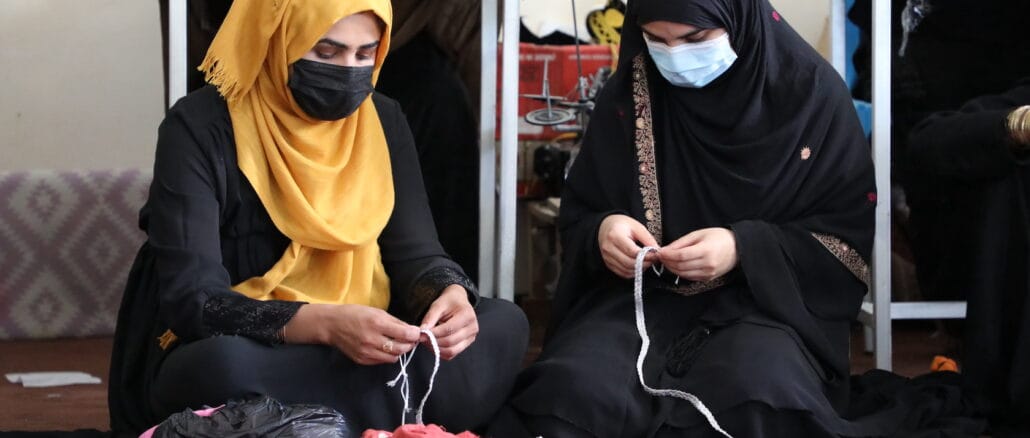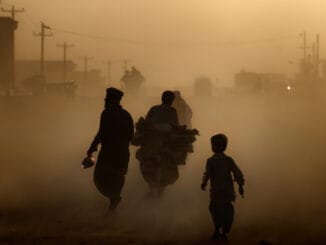
Since the Taliban’s takeover in August 2021, Afghanistan has faced severe financial isolation. Cut off from the global banking system, international financial institutions remain hesitant to engage with the Taliban-led administration. This has exacerbated an economic crisis, restricting foreign investment, limiting access to financial aid, and stalling development efforts.
Restricted Access to Banking and Financial Institutions
According to the World Bank’s Afghanistan Economic Monitor (January 2025), Afghanistan’s economic recovery remains fragile due to financial isolation and limited foreign aid. One of the key impacts of this isolation has been the decline in foreign currency inflows, which has led to the depreciation of the Afghani (AFN) and reduced purchasing power. The report highlights that:
- The Afghani depreciated by 12% from November 2024 to January 2025.
- The trade deficit surged by 54% in 2024, reaching $9 billion (45% of GDP), partly due to weakened foreign trade relations and limited access to global banking mechanisms.
- The Da Afghanistan Bank (DAB) injected over $100 million into the market to stabilize the exchange rate.
Afghan businesses find it extremely difficult to conduct international transactions without access to the SWIFT global banking system. This disruption has severely affected imports and exports, further deepening the economic crisis.
U.S. Aid Suspension Sparks Economic Crisis in Afghanistan: Currency Decline and Rising Food Prices
The Human Cost of Financial Isolation
The lack of foreign aid and financial restrictions has had severe humanitarian consequences:
- Rising poverty and unemployment: High poverty rates remain a concern, with limited job opportunities and wages failing to keep up with inflation.
- Food insecurity: While food prices declined by 4.5% year-on-year, short-term inflation trends in December 2024 showed a 1.4% increase due to currency depreciation and poor harvests.
- Healthcare funding crisis: International donors once covered 75% of Afghanistan’s public spending, but these funds have largely dried up. The healthcare system now struggles to maintain basic services.
The World Bank warns that long-term economic growth will remain stalled without reintegration into the international financial system, leaving millions of Afghans vulnerable.
Taliban Taxation: Revenue Generation Amid Economic Downturn
While Afghanistan’s financial isolation has hindered formal economic growth, the Taliban has managed to sustain governance through alternative revenue streams. Despite declining foreign aid, the administration has implemented a taxation and revenue collection system to fund its operations.
How the Taliban Collects Revenue
According to the World Bank’s January 2025 report, Afghanistan’s domestic revenue collection in the first ten months of FY2024-25 reached AFN 190.5 billion ($2.5 billion), accounting for 12% of the country’s annual GDP. The breakdown of revenue collection includes:
- Customs duties and border taxes: Customs fees accounted for 52% of revenue, amounting to AFN 51.5 billion, driven by higher imports and improved border management.
- Non-tax revenues: Generated AFN 66 billion, mainly from mining, vehicle registrations, tolls, and passport issuance.
- Direct taxation: Businesses and industries continue to be taxed, with domestic tax revenue growing by 11% in 2024.
The Impact of Women’s Education on Afghanistan’s Economy: A Missed Opportunity
The Role of the Mining Sector
The Taliban has increasingly relied on Afghanistan’s mining sector to sustain revenue collection. The World Bank notes that mining royalties and extraction taxes have surged, with key minerals such as coal, lithium, and copper playing a central role. However, recent declines in coal exports (down 64%) due to Pakistan sourcing from alternative suppliers have affected income streams.
Challenges in Tax Collection and Economic Management
Despite an increase in tax revenues, Afghanistan faces structural economic challenges:
- Corruption and lack of transparency: Many businesses report being double-taxed by different Taliban factions.
- Economic contraction: Limited foreign investment has reduced taxable revenues.
- Declining exports: A 5% drop in total exports in 2024 has resulted in less customs revenue.
Conclusion: A Fragile Economy Dependent on Internal Revenue
The World Bank’s findings highlight that while the Taliban has managed to sustain revenue collection, the overall economic outlook remains fragile. The lack of international financial integration, limited foreign aid, and a weakening trade base pose serious risks to Afghanistan’s long-term economic stability. Without global banking access, international aid, and diversified trade relations, the current taxation system alone will not address Afghanistan’s broader economic and humanitarian crisis.
As the Taliban seeks alternative funding sources, including strengthening ties with Iran and China, the question remains: Can internal taxation and regional partnerships replace the economic support once provided by the international community?





Be the first to comment